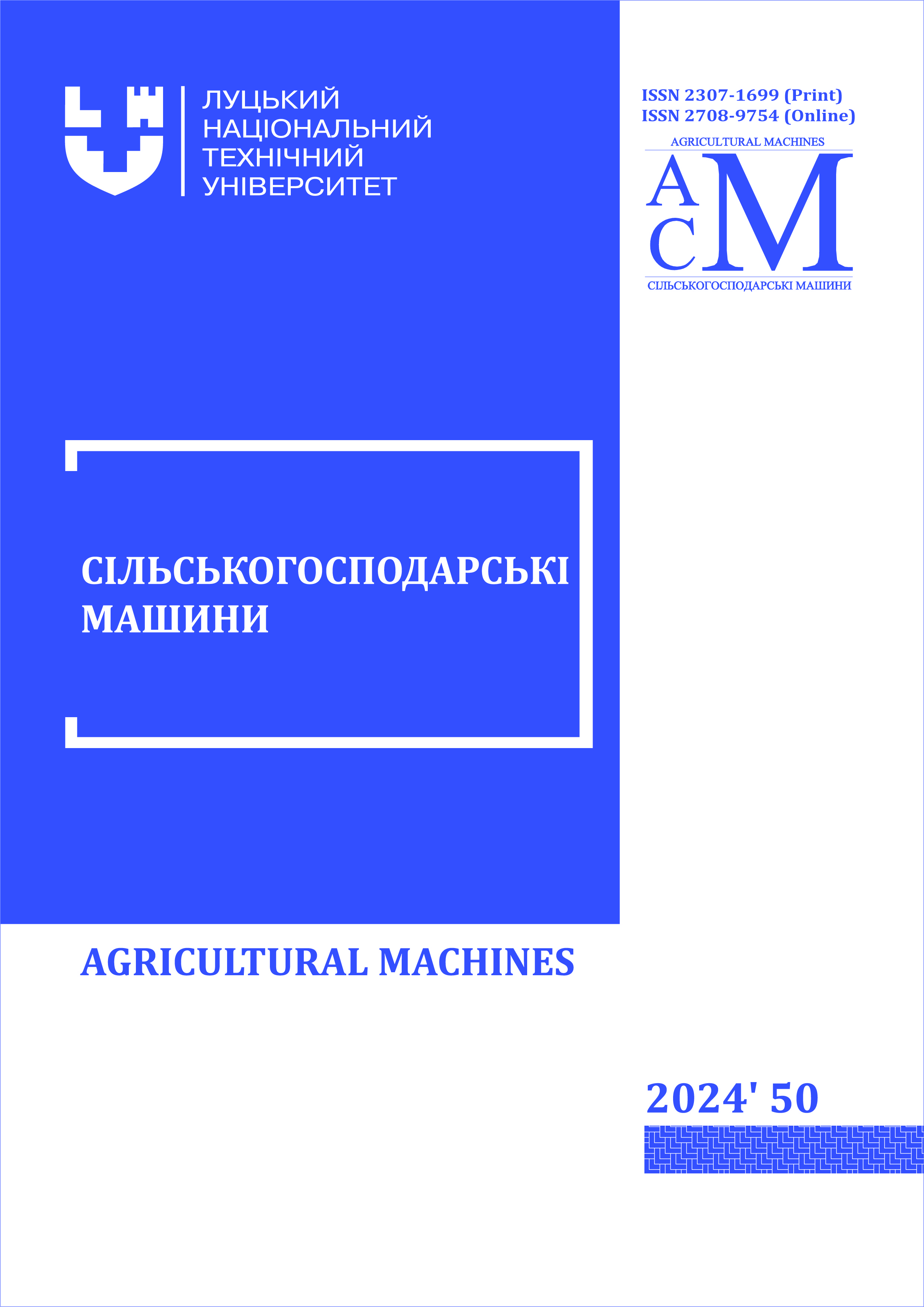РЕЗУЛЬТАТИ ДОСЛІДЖЕННЯ ТВЕРДОСТІ ҐРУНТУ ПОЛІВ ДПЕДГ «ЕЛІТА»
DOI:
https://doi.org/10.36910/acm.vi50.1332Ключові слова:
твердість ґрунту, олійні культури, глибоке розпушення, картограма твердості, робочий органАнотація
Поля ДПЕДГ «Еліта» розташовані на дерново-підзолистих супіщаних та піщаних ґрунтах, що мають різну твердість на різних ділянках одного поля. Така особливість ґрунтів не сприяє реалізації потенціалу олійних культур. Особливо стає актуальною проблема за умови критичного зниження вологи в орному шарі ґрунту. Адже олійні культури завдяки стрижневій кореневій системі здатні використовувати вологу, що знаходиться нижче орного шару ґрунту, якщо твердість ґрунту в цих шарах є оптимальною для проникнення туди кореневої системи. Тому розроблено методику та реалізоване дослідження твердості ґрунту визначених полів ДП для оптимізації робіт з глибокого їх розпушення. У дослідженнях застосовували методику, що базується на використанні твердоміра «Лан-М PRO», мобільного додатку для формування рівномірної мережі замірів твердості на конкретному полі з прив’язкою до GPS координат, а також програми FIELD-M Archive Viewer 2.4. Відповідно до розробленої методики проводили вимірювання твердості ґрунту у двох точках на кожному гектарі поля. За отриманими значеннями у результаті дослідження будували картограми твердості полів для шарів ґрунту на глибинах від 25 см до 50 см з кроком 5 см. На основі аналізу картограм розроблені рекомендації з проведення глибокого розпушення досліджуваних полів. Отримані рекомендації дозволяють для більшості площ обмежитись глибиною обробітку 45 см. Також встановлено, що для урахування варіації розподілу твердості ґрунту полів за їх площею та глибиною, які відображені на картограмах, потребують дослідження та впровадження нові принципи глибокого обробітку ґрунту. Оскільки саме через впровадження нових принципів глибокого обробітку можна буде розробити знаряддя, яке здатне змінювати глибину ходу кожного окремого робочого органу в режимі реального часу відповідно до картограм.
Посилання
Bednar. (n.d.). Terraland TN. Retrieved April 27, 2024, from https://www.bednar.com/en/terraland-tn/
Greatplain. (n.d.). Sub-soiler. Retrieved April 28, 2024, from https://www.greatplainsag.com/en-gb/products/709/sub-soiler
Gregoire-besson. (n.d.). Sub-Soilers. Retrieved April 27, 2024, https://www.gregoire-besson.com/en/machines/helios
Jympa. (n.d.). Subsoiler. Retrieved April 28, 2024, from: https://jympa.com/en/products/agriculture/subsoilers/
Wil-rich. (n.d.). Rippers. Retrieved April 28, 2024, from https://www.wil-rich.com/primary-tillage/rippers/357-inline-ripper/
Бромот, І. (2019). Глибокорозпушувач. Навіщо він мені потрібен (Deep conditioner. Why do I need him). Retrieved April 28, 2024, from https://traktorist.ua/articles/883-glibokorozpushuvachi--vse-scho-treba-znati-pro-nih
Гаврилов, С. (2015). Проблема плужної підошви у ґрунті та шляхи її вирішення (The problem of the plow sole in the soil and ways to solve it). Пропозиція, 10, 70-73.
Гарькавий, А. Лавіцький, О., Гусонька, Р., & Хаматов, М. (2010). Пристрій для рихлення ґрунту (Device for loosening the soil). Патент України 51256. Київ: Державний департамент інтелектуальної власності.
Гарькавий, А., Середа, Л., Заболотний, Г., Петриченко, В. & Івасик, М. (2006). Спосіб обробітку ґрунту (Method of soil cultivation). Патент України 15179. Спосіб обробітку ґрунту. Київ: Державний департамент інтелектуальної власності.
Медведєв, В. В. (2003). Наукові підходи до оцінювання якості ґрунтів регіонів (на прикладі України) (Scientific approaches to assessing the quality of regional soils (using the example of Ukraine)). Сб. научн. трудов «Страны и регионы на пути к сбалансированному развитию», 62-64.
Медведєв, В. В. (2004). Проблеми охорони ґрунтів (Problems of soil protection). Вісник аграрної науки, 1, 53-57.
Медведєв, В. В. (2010). Твердість ґрунту як критерій для обґрунтування технологій і технічних засобів з його обробітку (Soil hardness as a criterion for justifying technologies and technical means for its cultivation). Вісник аграрної науки, 4, 14-18.
Цизь, І. Є., Дідух, В. Ф., Голій, О. В., Хвесик, В. О., & Голій, В. О. (2023). Дослідження впливу сапропелю природної вологості на урожайність сої за екстремальної нестачі вологи (Study of the effect of natural humidity of sapropel on the growth of soybeans under extreme moisture shortage). Сільськогосподарські машини, 49, 22-30. https://doi.org/10.36910/acm.vi49.1013











